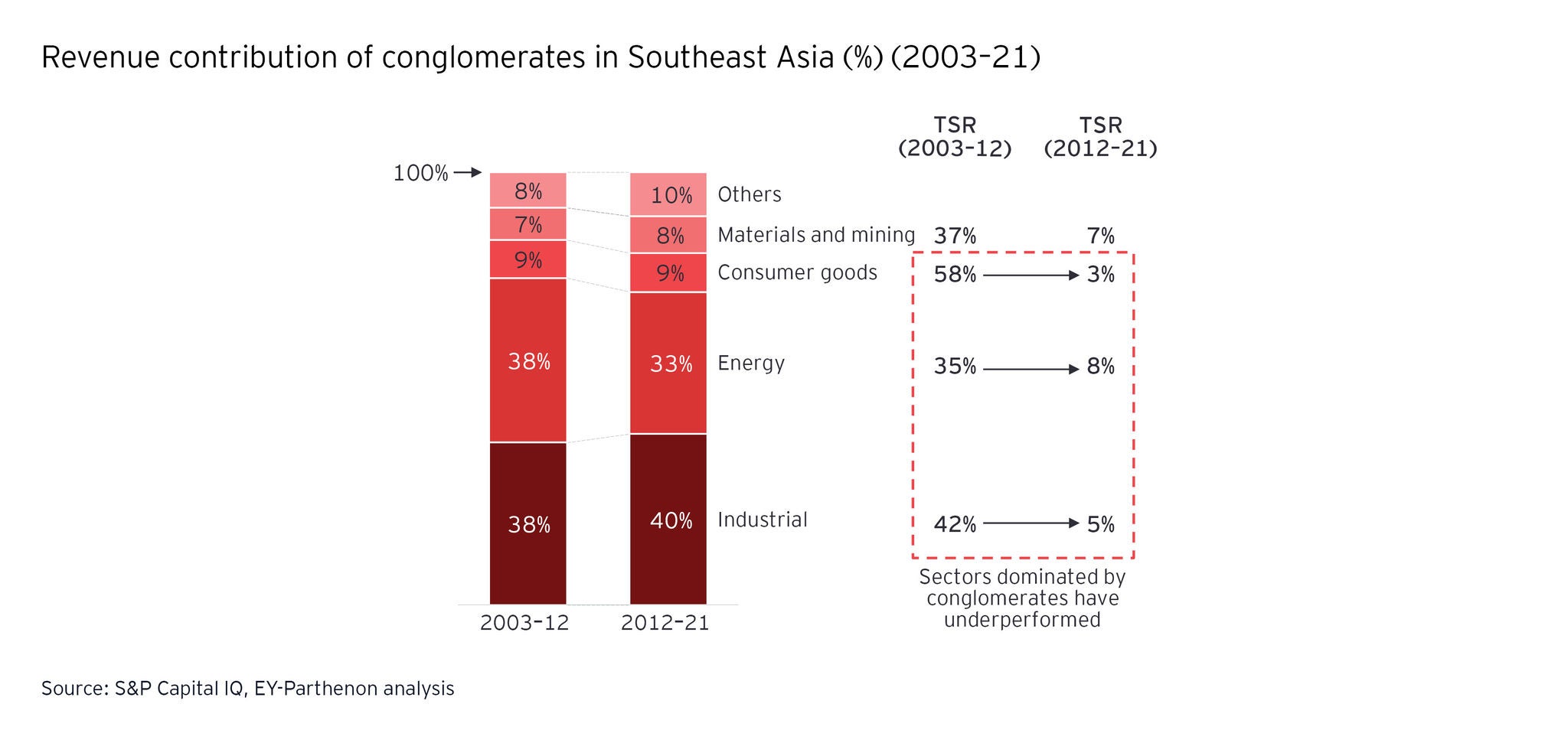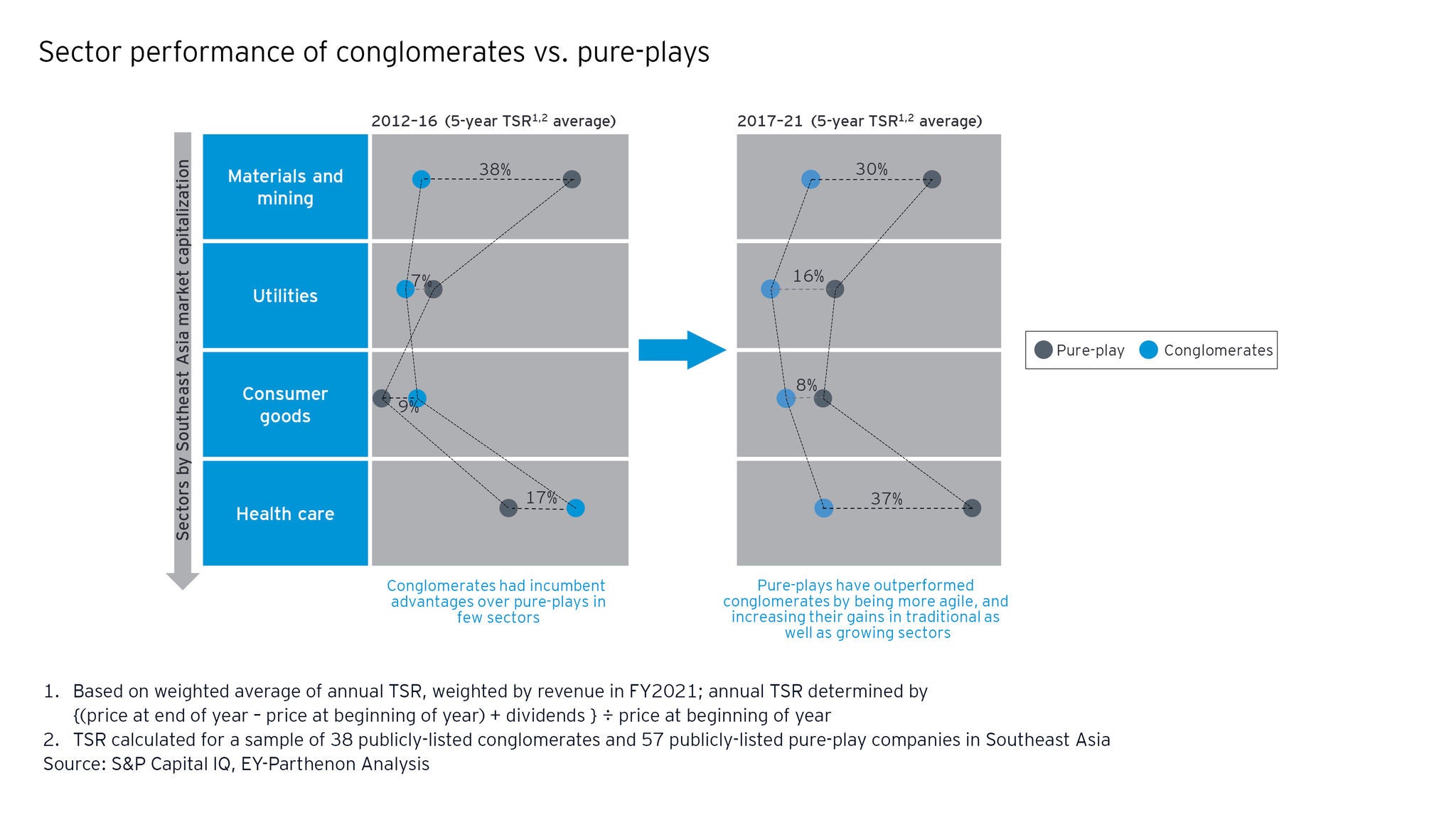The study also highlighted other attributes of Southeast Asia’s conglomerates.
Less diversification
Conglomerates in Southeast Asia are less diversified, with the top three sectors where they operate in representing some 90% of total revenues, compared with 75% for global counterparts. Being less diversified allows for access to capital markets more easily, which can be used to enter new markets. However, the lower diversification also exposes them to a higher degree of financial and sector-specific risks.
More family ownership
Nearly 75% of conglomerates in Southeast Asia are family-owned, compared with only 50% of global counterparts. Family-owned businesses typically have a longer-term strategic outlook for legacy reasons and tend to leverage relationships and networks to perpetuate greater influence over the market.
Smaller business size
Conglomerates in Southeast Asia are smaller and control about 50 portfolio companies on average, compared with about 175 for their global counterparts. They also have an average revenue of US$4.5b, compared with over US$50b for their global counterparts covered in this study. Having fewer portfolio companies allows better strategic alignment and focused management, leading to a greater parenting advantage.
Smaller footprint
Conglomerates in Southeast Asia typically have a smaller footprint, operating in less than 10 countries on average, compared with over 60 countries for their global counterparts. The smaller footprint allows for greater focus on the management of the company and enables the portfolio companies to develop more focused, local strategies that help support deeper market penetration.






